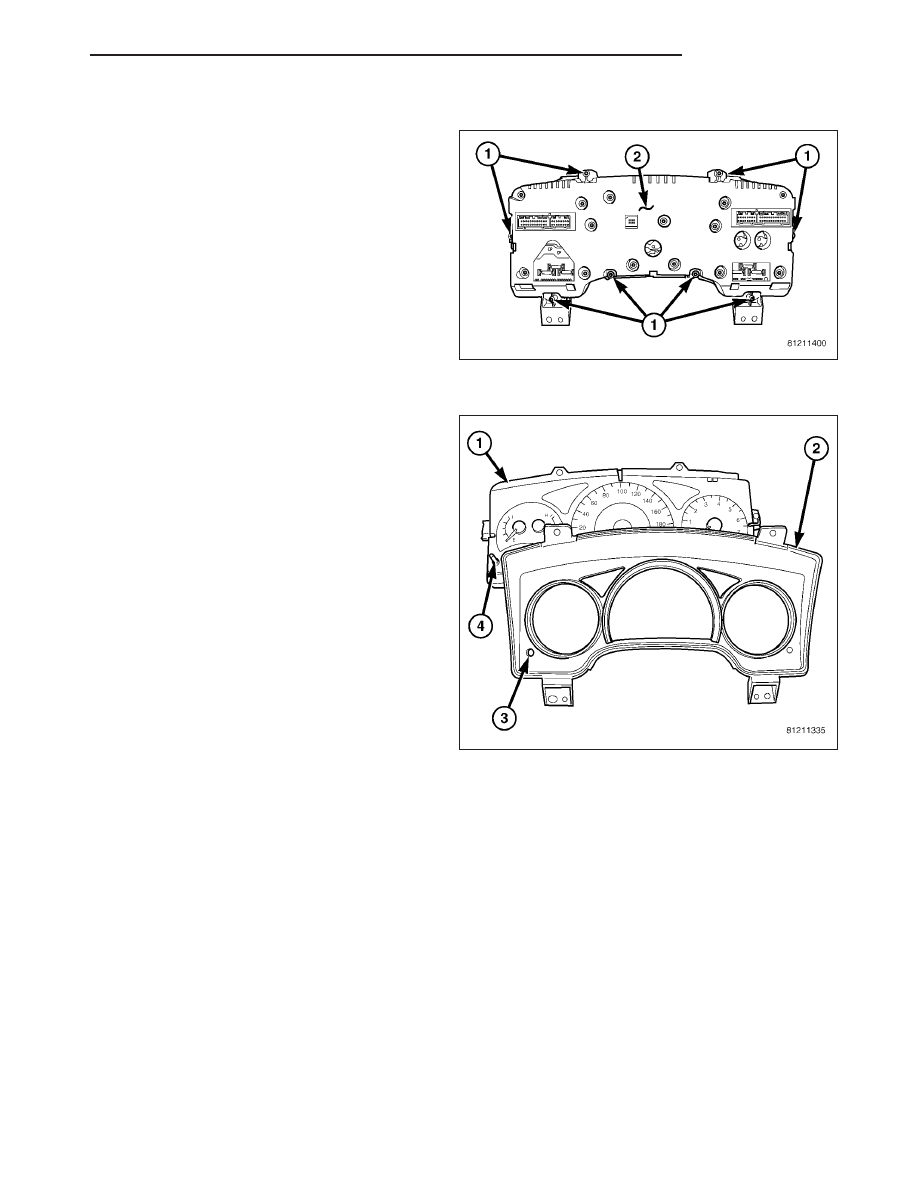Dodge Durango (HB). Manual - part 312

CLUSTER LENS, HOOD, AND MASK
1. Disconnect and isolate the battery negative cable.
2. Remove the instrument cluster from the instrument
panel. (Refer to 8 - ELECTRICAL/INSTRUMENT
CLUSTER - REMOVAL).
3. From the back of the instrument cluster (2), remove
the eight screws (1) around the outer perimeter of
the rear cover that secure the lens, hood, and
mask unit to the cluster housing.
4. Remove the lens, hood, and mask unit (2) from the
face of the instrument cluster (1).
ASSEMBLY
WARNING: To avoid personal injury or death, on vehicles equipped with airbags, disable the supplemental
restraint system before attempting any steering wheel, steering column, airbag, occupant classification sys-
tem, seat belt tensioner, impact sensor, or instrument panel component diagnosis or service. Disconnect
and isolate the battery negative (ground) cable, then wait two minutes for the system capacitor to discharge
before performing further diagnosis or service. This is the only sure way to disable the supplemental
restraint system. Failure to take the proper precautions could result in accidental airbag deployment.
NOTE: The cluster lens, hood and mask unit is the only component of the instrument cluster used in this
vehicle that is serviced separately. Following is the procedure for assembling this component to the instru-
ment cluster.
HB
CLUSTER
8J - 45